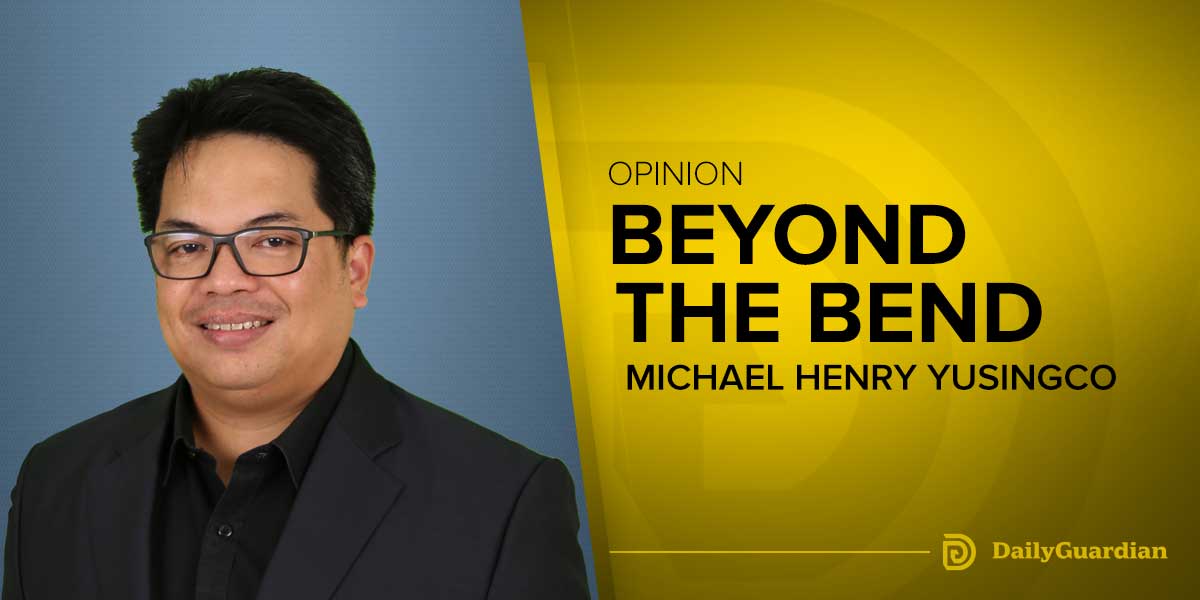By Michael Hudson
Last of two parts
Starting with the very outset of debt records c. 2500 BCE in Sumer, and continuing down through Babylonia, Assyria, to their neighbors, and on through the early first millennium BCE, rulers annulled financial claims on agrarian debtors. That prevented creditors from concentrating money and land in their own hands. One might say that these debt cancellations and land redistributions were the Near Eastern alternative to destroying material wealth to preserve balance. These royal acts did not destroy physical wealth but simply wiped out the debt overhead to maintain widespread land tenure and liberty for the population at large.
Canceling agrarian debt was politically feasible because most personal debts were owed to the palace sector and its temples or their officials. Royal Clean Slates seemed so unthinkable when they began to be translated around the turn of the last century that early readers hardly could believe that they actually were enforced in practice. François Thureau-Dangin’s French translation of the Sumerian ruler Enmetena’s (c. 2400 BCE) proclamation in 1905 was believed by many observers to be too utopian and socially disruptive to have been followed in practice, as was the Biblical Jubilee Year of Leviticus 25.[1]
But so many such proclamations have been found, extending so continuously over thousands of years—along with lawsuits in which judges upheld their increasing detail—that there is no doubt that these acts did indeed reconcile the accumulation of monetary wealth with social resilience by blocking the creation of predatory oligarchies such as those that would emerge in classical Greece and Rome and indeed survive into today’s world.
Monetary Innovations in the Bronze Age Near Eastern Palaces and Temples
Economic documentation in Schurtz’s day was able to trace monetary practice only as far back as classical Greece and Rome. There was a general belief that their practices must have evolved from Indigenous Indo-European speakers. Marcel Mauss would soon treat the gift exchange of the Kwakiutl tribe of the Canadian Pacific Northwest (with their competitive one-upmanship) as the prototype for the idea of charging interest. But monetary interest has a specific stipulated rate, with payments due on specific periodic dates set by written contracts. That practice stems from Sumer in the third millennium BCE, along with silver (and grain) money and related financial innovations in the economic big bang that has shaped subsequent Western economic evolution.
Money’s function as a standard of valuation did not play a big role in Schurtz’s survey. But subsequent archaeological research has revealed that money’s emergence as part of an overall institutional framework cannot be understood without reference to written account-keeping, denominating debt accruals, and fiscal relations. Money, credit/debt, and fiscal obligations have all gone together since the origins of written records in the ancient Near East.
Near Eastern fiscal and financial records describe a development of money, credit, and interest-bearing debt that neither the barter theory nor Schurtz’s ethnographic studies had imagined. Mesopotamia’s “more ideal” money evolved out of the fiscal organization of account-keeping and credit in the palaces and temples of Sumer, Babylonia, and their Bronze Age neighbors (3200–1200 BCE). These Near Eastern economies were larger in scale and much more complex and multilayered than most of the Indigenous communities surveyed by Schurtz.
In contrast to largely self-sufficient communities, southern Mesopotamia was obliged to engage in large-scale and long-distance trade because the region’s river-deposited soil lacked metal, stone, and even hardwood. The region’s need for raw materials was far different from the trade and “monetization” of luxuries by the relatively small-scale and self-sufficient communities studied by Schurtz and hypothesized by economists imagining individuals bartering at their local market. In these communities, he noted: “The amount of metal shaped into ornaments almost always far outweighs the amount transformed into practical tools.” Mesopotamia’s trade had to go far beyond personal decorative luxuries and prestige commodities or trophy items.
An entrepreneurial merchant class was needed to obtain these raw materials, along with a specialized labor force, which was employed by the temples and palaces that produced most export handicrafts, provisioned corvée labor to work on public infrastructure, served as mints and overseers of weights and measures, and mediated most monetary wealth and debt. This required forward planning and account-keeping to feed and supply labor (war widows, orphans, and slaves) in their weaving and other handicraft workshops and to consign their output to merchants for export. Calculating the cost of distributing food and raw materials within these large institutions and valuing their consignment of goods to merchants required designing standard weights and measures as the basis for this forward planning. Selecting monetary units was part of this standardization of measuring costs and value.
This made possible the calculation of expected rental income or shortfalls, along with profit-and-loss statements and balance sheets. The typical commodity to be distributed was grain, which served as a standard of value for agrarian transactions and credit balances that mounted up during the crop year for advances to sharecroppers, consumption such as beer from ale-women, and payments to priests for performing ceremonial functions. Their value in grain was to be paid at harvest time.
The calculation of food rations for distribution to the various grades of labor (male, female, and children) enabled the costs to be expressed in grain or in workday equivalents.
Schurtz would have called this grain “inside-money,” and regarded as “outside-money” the silver minted by temples for dealing with foreign trade and as the basic measure of value for business transactions with the palace economy and for settling commercial obligations. A mina (60 shekels) of silver was set as equal to a corresponding unit of grain as measured on the threshing floor. That enabled accounts to be kept simultaneously in silver and grain.
The result was a bi-monetary grain-silver standard reflecting the bifurcation of early Mesopotamian economies between the agrarian families on the land (using grain as “inside-money”) and the palatial economy with its workshops, foreign trade, and associated commercial enterprise (using silver as “outside-money”).
Prices for market transactions with outsiders might vary, but prices for debt payments, taxes, and other transactions with large institutions were fixed.
Schurtz’s conclusion that the rising dominance of commercial money tended to break down domestic checks and balances protecting the Indigenous communities that he studied is indeed what happened when commercial debt practices were brought from the Near East to the Aegean and Mediterranean lands around the eighth century BCE.
Having no tradition of royal debt cancellations as had existed in the Near East ever since the formative period of interest-bearing debt, the resulting decontextualization of credit practices fostered financial oligarchies in classical Greece and Rome. After early debt cancellations and land redistribution by populist “tyrants” in the seventh and sixth centuries BCE, the ensuing classical oligarchies resisted popular revolts demanding a revival of such policies.
The dynamics of interest-bearing debt and the pro-creditor debt laws of classical antiquity’s creditor oligarchies caused economic polarization that led to five centuries of civil warfare. These upheavals were not the result of the coinage that began to be minted around the eighth century BCE, as many 19th-century observers believed, mistakenly thinking that Aegean coinage was the first metallic money. Silver-money had been the norm for two millennia throughout the Near East, without causing disruption like that experienced by classical antiquity. What polarized classical antiquity’s economies were pro-creditor debt laws backed by political violence, not money.
Conclusion and Discussion
Schurtz’s starting point was how communities organized the laws of motion governing their distribution of wealth and property. He viewed money as emerging from this institutional function with a basically communalistic ethic. A key characteristic of Indigenous economic resilience was social pressure expecting the wealthy to contribute to social support. That was the condition set by unwritten customs for letting some individuals and their families become rich.
Schurtz and subsequent ethnologists found a universal solution for reconciling wealth-seeking with community-wide prosperity to be social pressure for wealthy families (that was the basic unit, not individuals) to distribute their wealth to the citizenry by reciprocal exchange, gift-giving, mutual aid, and other forms of redistribution, and providing large feasts, especially for rites of passage.
This was a much broader view than the individualistic economic assumption that personal gain-seeking and, indeed, selfishness were the driving forces of overall prosperity. The idea of monetizing economic life under communalistic mutual aid or palace direction was and remains anathema to mainstream economists, reflecting the worldview of modern creditors and financial elites. Schurtz recognized that mercantile wealth-seeking required checks and balances to prevent economies from impoverishing their members.
The problem for any successfully growing society to solve was how to prevent the undue concentration of wealth obtained by exploitative means that impaired overall welfare and the ability of community members to be self-supporting. Otherwise, economic polarization and dependency would lead members to flee from the community, or perhaps it simply would shrink and end up being defeated by outsiders who sustained themselves by more successful mutual aid.
As noted above, Schurtz treated the monetization of wealth in the form of creditor claims on debtors as too post-archaic to be a characteristic of his ethnographic subjects. But what shaped the context for monetization and led “outside-money” to take priority over inside-money were wealth accumulation by moneylending and the fiscal and military uses of money. Schurtz correctly rejected Bruno Hildebrand’s characterization of money as developing in stages, from small-scale barter to monetized economies becoming more sophisticated as they evolved into financialized credit economies.[2]
And, in fact, the actual historical sequence was the reverse. From Mesopotamia to medieval Europe, agrarian economies operated on credit during the crop year. Monetary payment occurred at harvest time to settle the obligations that had accumulated since the last harvest and to pay taxes. This need to pay debts was a major factor requiring money’s development in the first place. Barter became antiquity’s final monetary “stage” as Rome’s economy collapsed after its creditor oligarchy imposed debt bondage and took control of the land.
When emperors were unable to tax this oligarchy, they debased the coinage, and life throughout the empire devolved into local subsistence production and quasi-barter. Foreign trade was mainly for luxuries brought by Arabs and other Near Easterners. The optimistic sequence that Hildebrand imagined not only mistakenly adopted the barter myth of monetary origins but also failed to take debt polarization into account as economies became monetarized and financialized.
Schurtz described how the aim of preventing the maldistribution of wealth was at the heart of Indigenous social structuring. But it broke down for various reasons. Economies in which family wealth took the form of cattle, he found, tended to become increasingly oppressive to maintain the polarizing inequality that developed. The same might be said of credit economies under the rising burden of interest-bearing debt. Schurtz noted the practice of charging debtors double the loan value—and any rate of interest indeed involves an implicit doubling time.
That exponential dynamic is what polarizes financialized economies. In contrast to Schurtz, mainstream economists of his generation avoided dealing with the effect of monetary innovation and debt on the distribution of wealth. The tendency was to treat money as merely a “veil” of price changes for goods and services, without analyzing how credit polarizes the economy’s balance sheet of assets and debt liabilities. Yet, the distinguishing feature of credit economies was the use of moneylending as a lever to enrich creditors by impoverishing debtors. That was more than just a monetary problem. It was a political creditor/debtor problem and, ultimately, a public/private problem.
The issue was whether a ruler or civic public checks would steer the rise in monetary wealth in ways that avoided the creation of creditor oligarchies.
Most 19th-century and even subsequent economic writers shied away from confronting this political context, leaving the most glaring gap in modern economic analysis. It was left to the discovery of cuneiform documentation to understand how money first became institutionalized as a vehicle to pay debts. This monetization was accompanied by remarkable success in sustaining rising wealth while preventing its concentration in the hands of a hereditary oligarchy. That Near Eastern success highlights what the smaller and more anarchic Western economies failed to achieve when interest-bearing debt practices were brought to the Mediterranean lands without being checked by the tradition of regular cancellation of personal nonbusiness debt.
Credit and monetary wealth were privatized in the hands of what became an increasingly self-destructive set of classical oligarchies culminating in that of Rome, which fought for centuries against popular revolts seeking protection from impoverishing economic polarization.
The devastating effects of transplanting Near Eastern debt practices into the Mediterranean world’s less communalistic groupings show the need to discuss the political, fiscal, and social-moral context for money and debt. Schurtz placed monetary analysis in the context of society’s political institutions and moral values and explained how money is a product of this context and, indeed, how monetization tends to transform it—in a way that tends to break down social protection. His book has remained relatively unknown over the last century, largely because his institutional anthropological perspective is too broad for an economics discipline that has been narrowed by pro-creditor ideologues who have applauded the “free market” destruction of social regulation aimed at protecting the interests of debtors.
That attitude avoids recognizing the challenges that led the Indigenous communities studied by Schurtz, and also the formative Bronze Age Near East, to protect their resilience against the concentration of wealth, a phenomenon that has plagued economies ever since classical antiquity’s decontextualization of Near Eastern debt practices.
Michael Hudson is an American economist, a professor of economics at the University of Missouri–Kansas City, and a researcher at the Levy Economics Institute at Bard College. He is a former Wall Street analyst, political consultant, commentator, and journalist. You can read more of Hudson’s economic history on the Observatory. This text is adapted from Michael Hudson’s foreword to An Outline of the Origins of Money by Heinrich Schurtz, and this excerpt was produced by Human Bridges.
References
Battilossi, Stefano; Cassis, Youssef; and Yago, Kazuhiko, editors, 2018. “Origins of Money and Interest: Palatial Credit, Not Barter.” In Handbook of the History of Money and Currency, pp. 45–66. Berlin: Springer.
Hildebrand, Bruno, 1864. “Naturalwirthschaft, Geldwirthschaft und Creditwirthschaft.” Jahrbücher für Nationalökonomie und Statistik 2: pp. 1–24.
Hudson, Michael, 1999. “From Sacred Enclave to Temple to City.” In Urbanization and Land Ownership in the Ancient Near East, edited by Hudson, Michael, and Levine, Baruch, pp. 117–46. Cambridge, MA: Peabody Museum of Archaeology and Ethnology, Harvard University.
Hudson, Michael, and Wunsch, Cornelia, editors, 2004. “The Development of Money-of-Account in Sumer’s Temples.” In Creating Economic Order: Record-Keeping, Standardization and the Development of Accounting in the Ancient Near East, pp. 303–29. Bethesda, MD: CDL Press; Republished by Dresden: ISLET, 2023.
Hudson, Michael, 2024. Temples of Enterprise: Creating Economic Order in the Bronze Age Near East. Dresden: ISLET.
Laum, Bernard, 1924. Heiliges Geld: Eine historische Untersuchung über den sakralen Ursprung des Geldes. Tübingen: J.C.B. Mohr.
Mauss, Marcel, 1925. The Gift: Expanded Edition. Translated by Guyer, Jane I. Chicago: Hau Books. 2016 edition.
Menger, Carl, 1892. “On the Origins of Money.” Economic Journal, Vol. 2, Issue 6: pp. 238–55.
Thureau-Dangin, François, 1905. Les Inscriptions de Sumer et d’Akkad. Paris: Leroux.
Wray, L. Randall, 2004. Credit and State Theories of Money: The Contributions of A. Mitchell Innes. Cheltenham: Edward Elgar Publishing.
[1] Thureau-Dangin, François (1905: 86–87), translated the Sumerian term for “justice” (amargi) to mean specifically that officials and wealthy individuals (“the powerful”) would have no legal claims for debt foreclosure.
[2] Hildebrand, Bruno (1864), classified economies as passing from Naturalwirtschaft (“barter economy”) to Geldwirtschaft (“gold/commodity money economy”) and finally Kreditwirtschaft (“credit economy”).




















